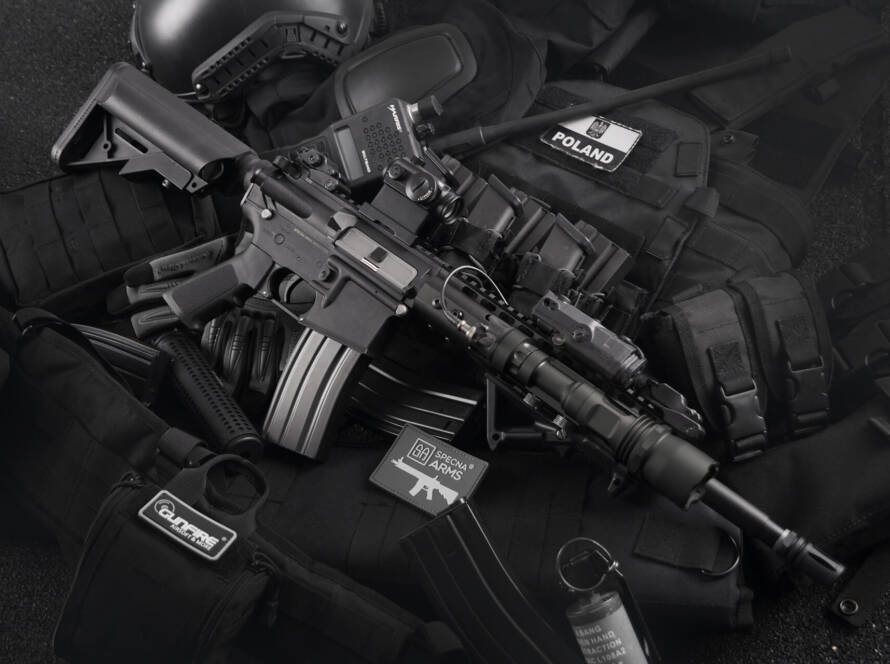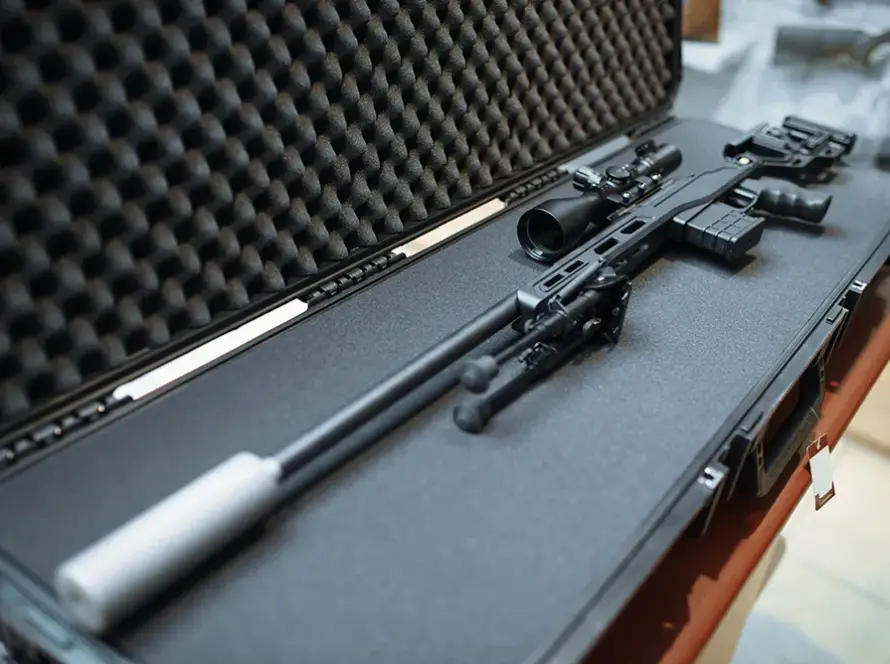From scorching steel-target stages to dusk-till-dawn hog hunts, suppression has become the single most practical upgrade for modern firearms. A quality can protects hearing, calms recoil, preserves night vision and keeps the neighbours out of your business. Yet with more than 200 commercial models on the U.S. market—and ever-changing legislation abroad—choosing the best gun silencers for 2025 can feel like chasing decibels in the dark.
This guide filters the hype through hard data: one comparison table, five core buying criteria, calibre-specific advice and the latest legal landscape. Finish the read and you’ll know exactly which suppressor to buy, how to mount it, and where ArrowDefence can take you for a real-time meter test before the Form 4 clock even starts.
Why the best gun silencers still rule the range
Health & communication Even a “quiet” 5.56 rifle measures ~165 dB bare muzzle—enough to cause instant, permanent hearing loss. A 30 dB-rated can drags that down to lawn-mower territory, letting shooters ditch bulky muffs and hear steel impacts or range commands in real time. Best Gun Silencers
Recoil & accuracy A good suppressor adds forward mass and redirects gas, trimming felt recoil up to 35 %. Muzzle blast distortion disappears, so spotting your own trace through the optic becomes second nature—crucial for solo hunters and PRS competitors.
Low-light signature Flash-hiding baffles cut bloom that blinds night-vision tubes and white-light shooters alike. Thermal drones pick up fewer glowing hotspots, too.
Neighbour goodwill In most EU countries the suppressor is marketed as a “moderator” for exactly this reason. Urban ranges survive noise-ordinance skirmishes only because members adopt cans early.
Bottom line: a suppressor costs less than a single custom barrel yet multiplies comfort, accuracy and community acceptance.
Core specs in a suppressor buyer guide
- Sound reduction (dB) – Measured at shooter’s ear with mil-spec A-weight meters; look for ≥ 30 dB on your chosen calibre.
- Weight & length – Anything over 22 oz or 9″ starts to swing heavy on muzzle; note overall rifle balance.
- Bore size & calibre rating – A .30 can works on .223 but sacrifices ~4 dB; dedicated .223 cans are quieter and lighter.
- Attachment system – Direct-thread is simplest, but QD muzzle-brake mounts speed barrel swaps and reduce point-of-impact shift.
- Materials & serviceability – Inconel or 17-4 PH cores survive magnum gas, while user-serviceable baffles are a must for dirty rimfire or sub-gun hosts.
Keep these five in a phone checklist when you hit the gun show; if a salesman can’t answer them, move to the next booth.
One-look comparison of leading cans (all prices street 2025)
| Model | Calibre Class | OAL / Weight | Avg. dB Reduction* | Mount Type | Street Price |
|---|---|---|---|---|---|
| Dead Air Mask HD | Rimfire (.22 LR–.22 Mag) | 5.1″ / 6.6 oz | 41 dB | ½-28 direct-thread | $399 |
| SilencerCo Omega 36M | Multi (.22–.338) | 6.0-7.7″ / 13.9-16.5 oz | 29 dB (5.56) / 23 dB (.308) | Bravo/QD HUB | $1 099 |
| Rugged Obsidian 9 | 9 mm & sub-.357 | 4.9-7.8″ / 8.7-12.7 oz | 35 dB (147 gr 9 mm) | Piston / 3-lug | $699 |
| Q Trash Panda | .30-cal (5.56–.300 WM) | 6.9″ / 11.8 oz | 32 dB (.308) | Cherry Bomb QD | $899 |
| SureFire SOCOM RC2 | 5.56 NATO | 6.2″ / 17 oz | 29 dB | Fast-Attach brake | $1 049 |
* Averaged across three independent metering labs at shooter’s ear.
Picking a 9 mm pistol suppressor: piston, booster & point-of-impact
Straight-blowback handguns rely on slide inertia; bolt them to a heavy cylinder and the action short-strokes. That’s why pistol cans include a Nielsen booster: a spring-loaded piston that briefly decouples mass during recoil.
- Thread standard: ½-28 for U.S., M13.5×1 LH for most European pistols.
- O-ring wipe caps are marketing fluff—modern monocores meter quieter without them.
- Subsonic 147 gr FMJ or 124 gr HST +P is mandatory; sonic cracks erase any gains.
Expect a 1- to 2-inch low POI shift at 15 yards; log it and stop chasing zero every range trip.
Selecting a 30 cal rifle suppressor for hunting & PRS
Magnum hunters require tougher alloys and larger blast chambers than AR shooters. Look for:
- Inconel or Stellite blast baffle to survive .300 WM powder columns.
- Minimal mirage on 10-shot strings—titanium sleeves cool faster than steel.
- Spare QD brake on secondary barrel; swapping cans in competition must maintain zero within 0.3 mils at 100 m.
Real-world gain? Our 24″ 6.5 CM match rifle dropped from 137 dB bare to 107 dB with a 32 dB-rated can, while vertical muzzle rise halved from 3.5 mil to 1.7 mil measured on high-speed footage.
Navigating suppressor legality 2025
- USA – e-Forms have cut BATFE transfer time to 90 days median, but eight states (e.g., CA, NY, IL) still ban civilian ownership.
- EU – Finland, France, Norway treat suppressors as gun parts; Germany now requires proof of “hearing protection need” but approves within weeks. UK still mandates firearm certificate variation.
- Australia / NZ – Suppressors remain prohibited in most territories, though New South Wales pilots a pest-control exemption.
Always file fingerprints and passport photos the same day as your Form 4 or EU police application—paperwork, not decibels, kills enthusiasm fastest.
ArrowDefence mounting & zero-shift clinic
A great can is only as good as its install. Our in-house armourers blueprint muzzle threads, time QD brakes to top-dead-centre and document pre/post-silencer group shift to 0.1 mil resolution using Doppler-verified ammo. You leave with:
- A laminated zero-shift card for each rifle.
- dB meter printouts from our military-grade Larand system.
- Torque spec log for every mount screw—never guess with titanium.



